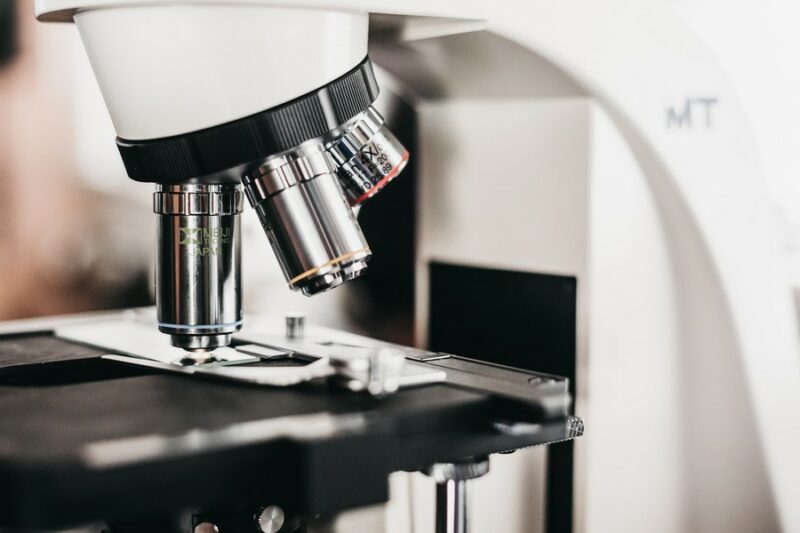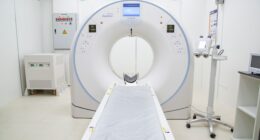A biopsy is a medical procedure in which a small sample of tissue is removed from the body for examination. An autopsy is a medical procedure in which the entire body is examined after death. A biopsy is typically done while the person is alive, while an autopsy is done after the person has died.
What is a biopsy?
(Image by Ri Butov from Pixabay )

A biopsy is a medical procedure that involves the removal of tissue or cells from the body for examination. Biopsies are performed to diagnose conditions such as cancer, infection, and inflammation. The tissue or cells are typically removed via needle or surgery, and then examined under a microscope.
What is an autopsy?
(Photo By finalwitness on Flickr)

An autopsy is a medical procedure that involves an examination of a deceased person’s body to determine the cause of death. Autopsies are performed by medical examiners or pathologists, and often involve dissecting the body and examining the organs. Autopsies can be either invasive or non-invasive, depending on the circumstances. An autopsy is performed when the cause of death is unknown or when there are signs of foul play. An autopsy can also be requested by the next of kin.
The difference between biopsy and autopsy
A biopsy is a medical procedure in which a small sample of tissue is removed from the body for examination. An autopsy is a medical procedure in which a complete examination of the body is conducted after death.
While both biopsy and autopsy can provide important information about the cause of death, they are two different procedures. A biopsy is typically performed on living patients, while an autopsy is conducted after the patient has died.
Autopsies are more comprehensive than biopsies and can provide detailed information about the cause of death. However, biopsies can be less invasive and may provide information that could help to save a patient’s life.
When is a biopsy performed?
There are several types of biopsy procedures, including needle biopsy, incisional biopsy, and excisional biopsy. Needle biopsies are the most common type of biopsy. During a needle biopsy, a long, thin needle is inserted into the body to remove a small sample of tissue. Incisional and excisional biopsies involve making an incision in the skin to remove a larger sample of tissue.
Biopsy results can often be obtained within a few days. In some cases, however, it may take weeks or longer to get the results. The type of biopsy performed will depend on many factors, including the reason for the procedure and the location of the tissue to be removed.
What is difference between post mortem and autopsy?
The terms “post-mortem” and “autopsy” are often used interchangeably to refer to a medical examination of a deceased person’s body. However, there is a subtle difference between the two terms.
An autopsy is a medical examination of a dead body to determine the cause of death, as well as any other medical conditions that may have contributed to the person’s death. Autopsies are typically performed by a pathologist, and may involve a full dissection of the body to examine the organs and tissues.
On the other hand, a post-mortem examination is a more general term that can refer to any examination of a deceased person’s body after death. This may include an autopsy, but can also include other types of medical examinations, such as a review of the medical records, or a review of the circumstances surrounding the person’s death.
In summary, all autopsies are post-mortem examinations, but not all post-mortem examinations are autopsies. An autopsy is a specific type of post-mortem examination that involves a thorough examination of the body to determine the cause of death.
What is the purpose of biopsy?
The purpose of a biopsy is to collect a sample of tissue or cells from a specific area of the body in order to examine it under a microscope and diagnose any abnormalities or diseases. Biopsies can be used to diagnose cancer, infections, autoimmune diseases, and other conditions. They may also be used to determine the stage of a disease or monitor the effectiveness of treatment. Biopsies can be performed on various parts of the body, including the skin, liver, lungs, breast, prostate, and other organs. The type of biopsy performed depends on the location of the tissue to be sampled and the reason for the procedure.
What are the 2 types of human autopsies?
here are two main types of human autopsies: clinical and forensic autopsies.
Clinical autopsies, also known as medical or academic autopsies, are performed to determine the cause of death, evaluate the effectiveness of medical treatment, and provide insights into the progression of disease. These autopsies are typically requested by the deceased’s family or the treating physician.
Forensic autopsies, on the other hand, are performed by a medical examiner or coroner to investigate the circumstances surrounding a death that is deemed to be unnatural, suspicious, or unexplained. The primary goal of a forensic autopsy is to determine the cause and manner of death and collect evidence that may be used in a criminal investigation or legal proceedings.
What are the 6 stages of an autopsy?
The six stages of an autopsy are:
- External Examination: The body is examined for any external injuries or abnormalities.
- Evisceration: The internal organs are removed and examined for any signs of disease or injury.
- Dissection: The organs are further examined in detail by dissection, and samples may be taken for analysis.
- Histology: Microscopic examination of the tissue samples taken during dissection is performed to determine the cause of death.
- Toxicology: Samples of bodily fluids are tested to determine the presence of drugs, poisons, or other toxic substances.
- Final Examination: All the findings from the previous stages are reviewed, and a final determination of the cause of death is made.
Are organs returned to body after autopsy?
In general, the organs that are removed during an autopsy are usually returned to the body after the examination is complete, unless they are needed for further testing or investigation. However, there are some cases where the organs may not be returned if they are deemed to be too damaged or if the family of the deceased requests that they be cremated with the body. It’s important to note that the decision to return the organs is ultimately up to the medical examiner or coroner performing the autopsy.
Featured Image By Misael Moreno on Unsplash








